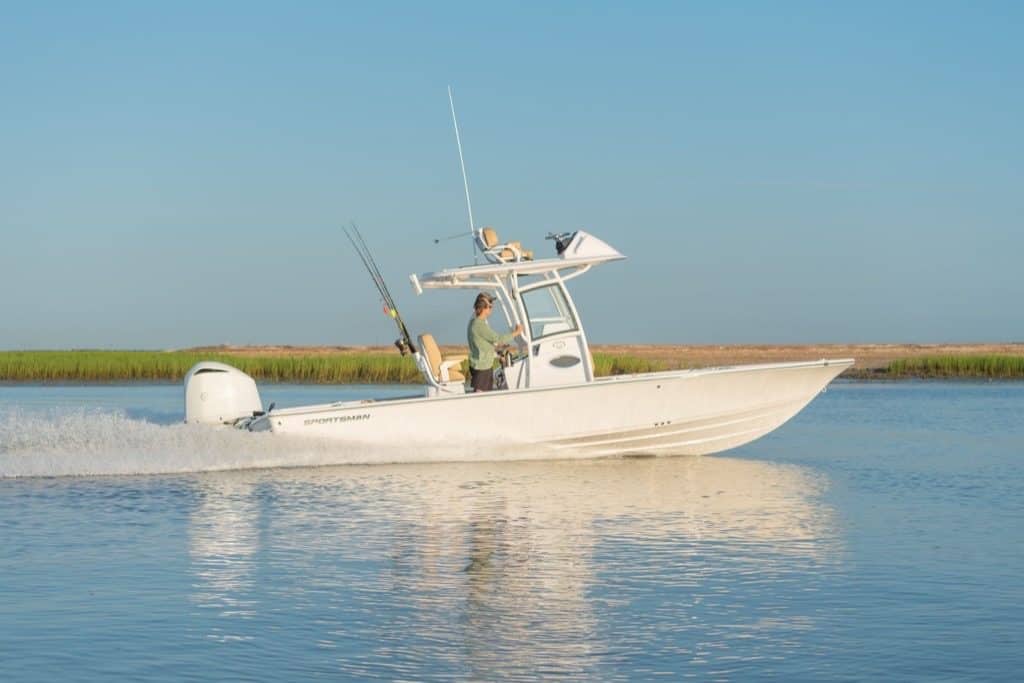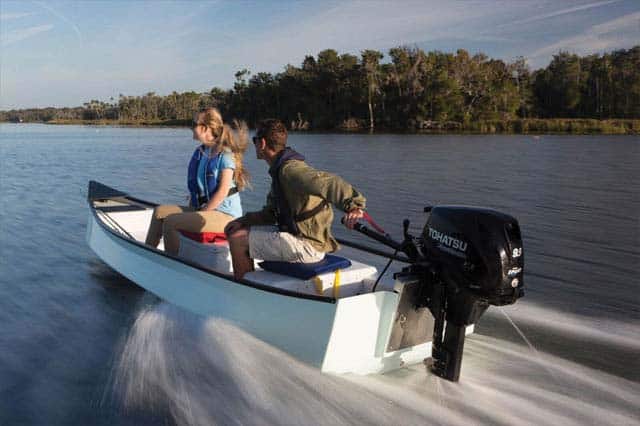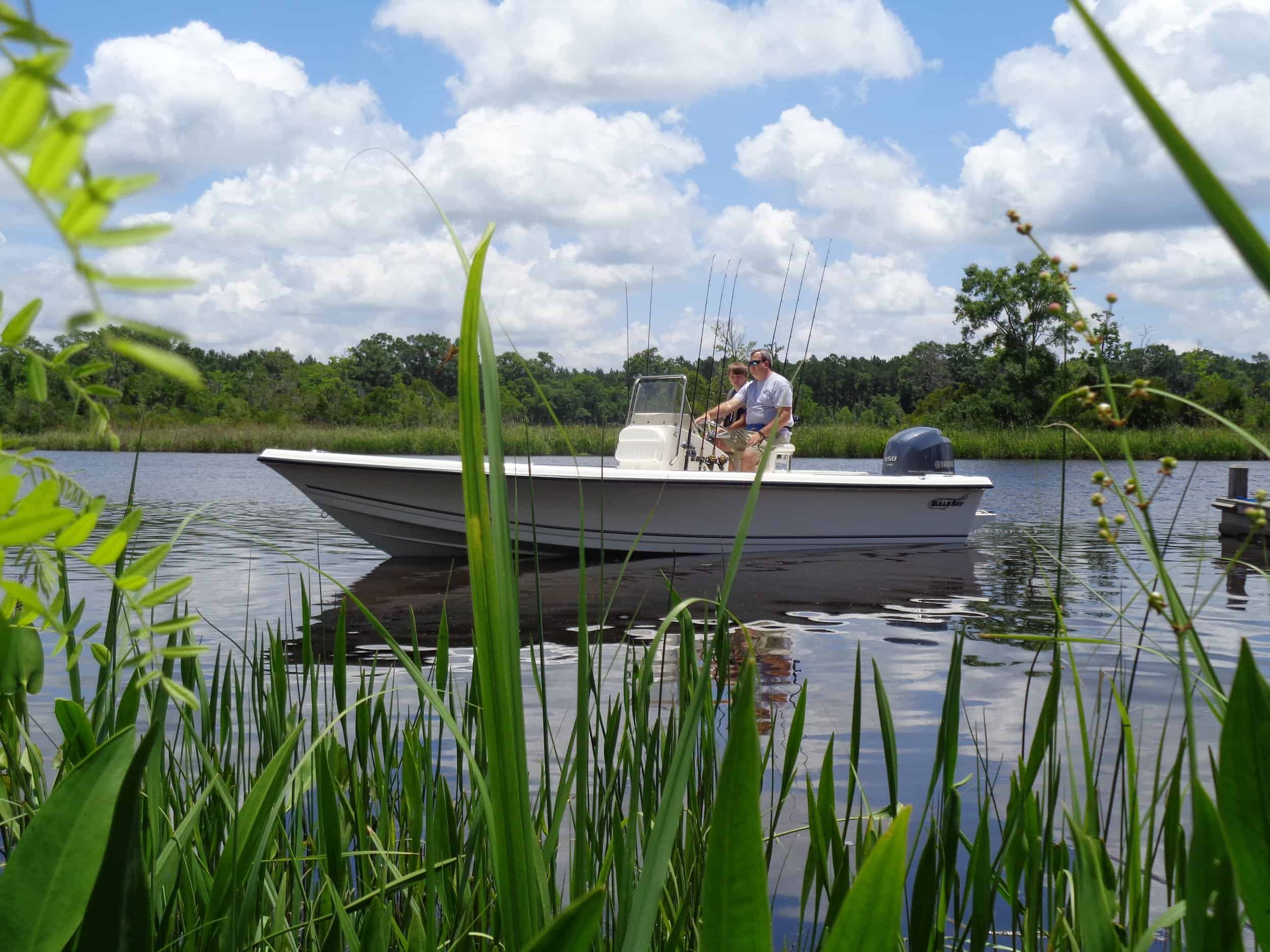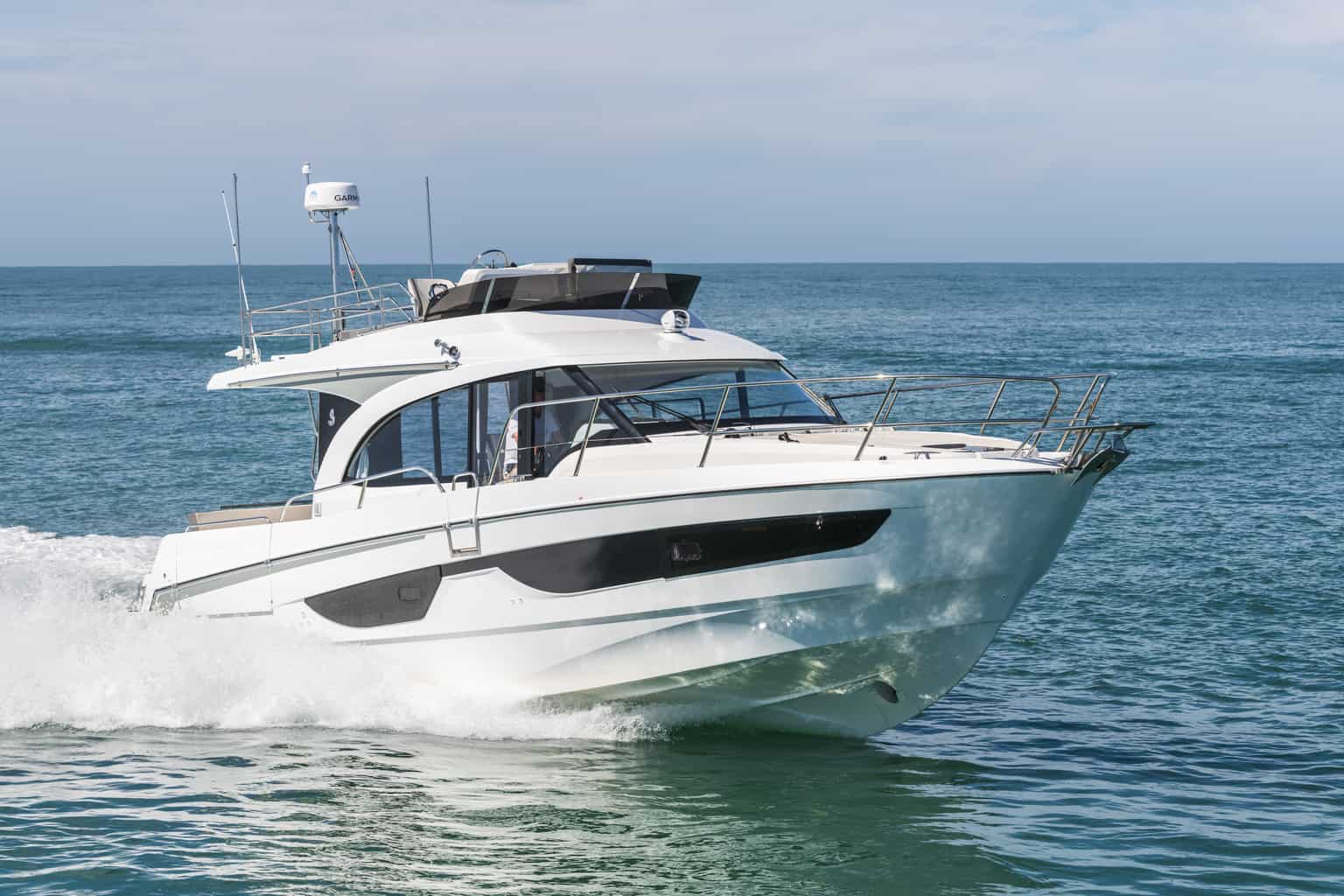Boatbuilding must get into some peoples’ blood.
Tommy Hancock and Dale Martin both helped found successful boat companies —SeaPro and Key West, respectively. Despite being competitors, they became good friends, hunting and fishing together. Both successfully sold out shortly after the turn of the century, but they kept an eye on the industry. By 2011, they had seen enough development in new design processes, materials, and manufacturing systems to recognize an opportunity to build high-quality fishing and family boats at reasonable prices. Thus, began Sportsman Boats, a company built on long experience and a strong workforce in the boatbuilding hub of Summerville, South Carolina.
They shipped their first model, a 22-foot, center-console fishing boat, in the Spring of 2012, and they have been growing ever since. Today, the line includes center consoles from 21 to 31 feet and bay boats from 20 to 27. Their construction meets both National Marine Manufacturer Association and American Boat and Yacht Council standards.
Chesapeake Bay Magazine recently had a long talk with a former recreational marine equipment supply company executive who “crawled all over” several brands in this price range two years ago before settling on a Sportsman Tournament 234 bay boat for serious fishing and family outings. After 380 hours over two years, running between Morehead City and Ocracoke along the North Carolina coast, including fishing wrecks up to fifteen miles offshore, he loves his boat for both purposes, and he plans on keeping her a long time. He described the boat as having “modern lines with traditional looks,” and he notes the careful thought that went into features like the design of the helm seats.
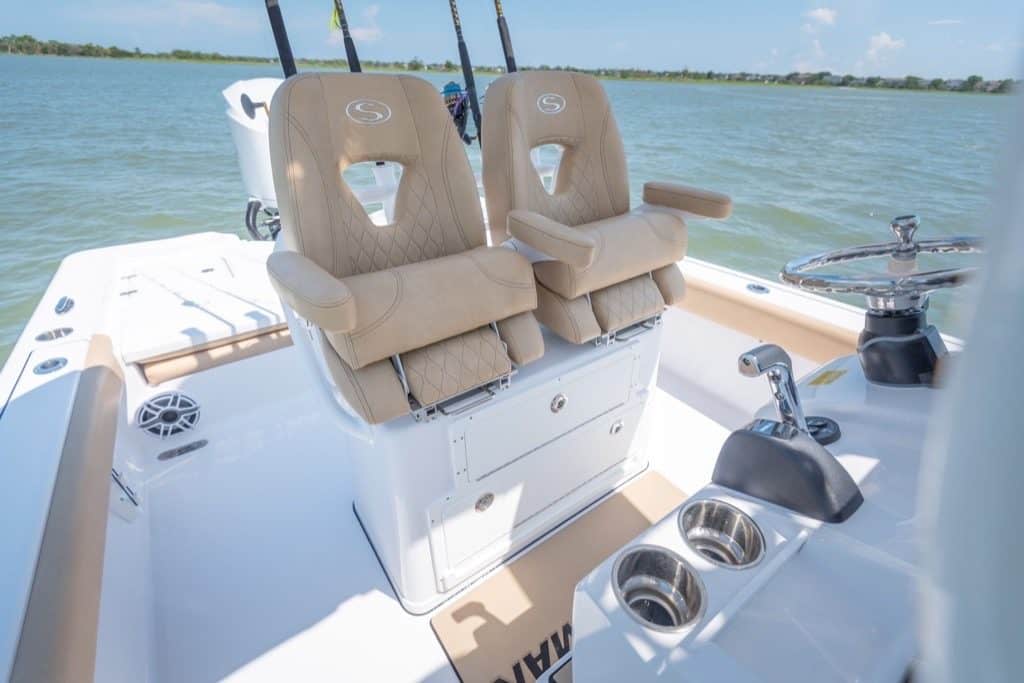
For this review, we were delighted to have a chance to run Sportsman’s larger, Masters 267 bay boat at a Yamaha media event on the Tennessee River in northern Alabama. We came away impressed, even though the boat was not rigged the way we would have chosen. The event centered on Yamaha’s introduction of its massive new 425-horsepower XTO V-8 outboard, and our test boat had one on its transom. It’s an impressive powerplant, but for most people and waters, it’s overkill, with a top speed pushing 60 knots.
As with my friend’s Tournament 234, Sportsman designed the 267 to run shallow but still handle open Bay and nearshore ocean waters. Its hull rides on a 16-degree running surface, which transitions in the forward third of the bottom to a sharp, wave-cleaving forefoot with enough flare and buoyancy to rise to nasty inlet seas. Trim tabs, engine trim, a SeaStar jackplate, and the throttle allow the skipper to dial it into suit the sea conditions. My friend confirmed this, noting that his 234 “rides well in a short chop, adjusting speed as necessary for comfort and safety.” The configuration and self-bailing cockpit make both models plenty able for their intended duties, but such a high top-speed is useless most of the time anywhere in the Chesapeake or coastal Carolina.
Realistically, we’d power this boat with Yamaha’s highly-regarded and well-proven 300 V-6, which weighs 390 pounds less than the 425 (562 lbs. vs. 952 lbs.), balances the boat much better, and still tops out at 45 knots with a light load. There’s plenty of power in reserve for a wide range of family activities and a wide range of planing speeds, from the mid-teens to the low thirties, to fit conditions from slick calm to gnarly. The 300 also burns 10- to 15-percent less fuel at cruising speeds and costs $15,000 less than the big V-8.
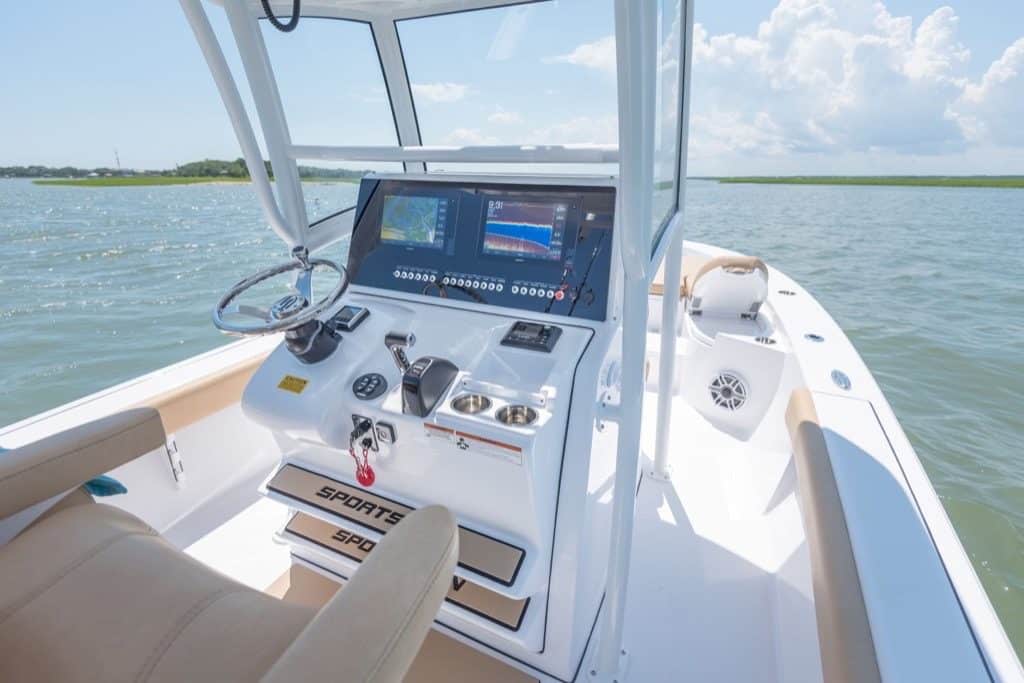
So, what is the Masters 267 fit for? It’s a big family and fishing boat. Consider the first category—lots of space to sit comfortably in an pair of upholstered, double seats in the stern deck, a pair of chairs at the helm that double as leaning posts, a cushioned double seat /cooler in front of the console, and a pair of cushioned lounge seats in a V-configuration in the bow deck with adjustable backs. (My friend agrees, noting that Sportsman’s in-house upholstery shop does excellent work, and the seats are comfortable for multiple passengers.) The console is large enough to offer an installed head and changing room, and Sportsman offers sunshades hung from the hardtop to shade the foredeck and the cockpit while at anchor or at a beach. The stern deck offers a swim platform with folding ladder to port, converting the 267 into a comfortable island for day excursions. For tow-sports, a transom pylon is available.
Cooler space on the Masters 267 is massive because the boat comes with four livewells bow to stern of 14, 21, 21, and 35 gallons that can carry ice, beverages, and fish or live bait. The gunwales offer horizontal storage for rods up to nine feet long, and the bow-deck sides hold up to five rods in secure, lockable storage. The aft edge of the hard-top and the back of the helm seat each hold four rods vertically. The helm seat holds a large tackle station below the holders. The bow and stern decks convert for casting by removing cushions and folding down seat backs. The bow-deck is prewired for a trolling motor, set up well enough that my friend installed his own, though Sportsman and its dealers are glad to take on that task. The company rigs integrated Garmin electronics systems at the factory. The 267’s console face can accommodate a pair of 12-inch displays, mounted side-by-side, with an integrated VHF overhead to port in the hardtop. The speakers for the JL Audio system also mount overhead in the hardtop. For lower Chesapeake cobia and red drum sight-casters, an upper helm station in the hardtop is available.
Sportsman Masters 267
LOA: 26′ 7″
Beam: 9′ 2″
Draft: 15″ (engine up)
Transom Deadrise: 16°
Weight: 4,300 lbs. (dry)
Bridge Clearance: 8′ 3″
sportsmanboatsmfg.com
Anybody who runs a boat in salt water for 200 engine hours per year (average recreational use is closer to 50) must pay attention to maintenance. One trademark of all Sportsman models is excellent bilge access under the seats in the stern deck. My friend notes appreciatively that all plumbing and wiring is well-organized and easy to reach, “even for large people.” He very much likes the friction hinges on his boat’s multiple hatches, which replace gas shocks. Problems have been minor—rust on several stainless bolts holding the hinges and a little bit of bubbling in the powder coat around the hardtop’s bases. In both cases, Sportsman’s customer service has been personal and quick with follow-up.
In sum, Sportsman offers high-quality family and fishing boats at relatively reasonable prices. Hancock, Martin, and their boatbuilding crew are hitting their marks well on their second boatbuilding venture. According to the current company web site, base internet price for a Masters 267 with a 300-hp Yamaha is $105,800.

